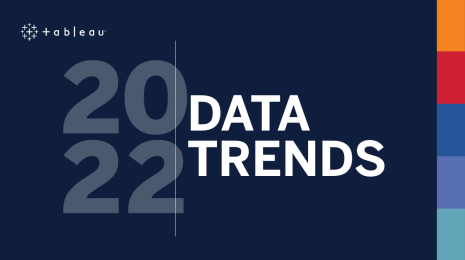Curbing waste, fraud, and abuse with data analytics
“The federal government continues to face an unsustainable long-term fiscal path caused by an imbalance between federal revenue and spending. While addressing this imbalance will require difficult policy decisions, opportunities exist in a number of areas to improve this situation, including where federal programs or activities are fragmented, overlapping, or duplicative.” – Government Accountability Office, 2019
It’s clear that sound government is synonymous with sound stewardship. As the GAO so aptly points out, without a proactive, sustainable approach to fiscal management and accountability, there is a lot of uncertainty ahead. Making fiscal accountability a top priority can help reduce uncertainty, and ensure organizational viability into the future. And for today’s public sector organizations, that means leveraging data to quantify, validate, and analyze programs, costs, and expenditures at a granular level, and identify where problems are occurring.
Using data to curb the financial risks and vulnerabilities, improper payments and leakages—otherwise known as waste, fraud, and abuse—associated with government spending is a necessary first step for all organizations that are serious about improving accountability and supporting sound stewardship of taxpayer dollars. Just how large is the challenge? Consider these data points:
- In 2015, $137B was lost to improper payments in government benefit programs, a $31B increase in two years. Seven programs lost more than $115B.
- In 2016, $144B, or 4.6% of all government payments, were lost to improper payments, with some multibillion-dollar programs reporting over 20% leakage, and 40% of losses resulted in monetary loss to the government
- From 2007 to 2015, the government prosecuted over 2,000 individuals for over $8B in Medicare fraud
What is an improper payment?
According to paymentaccuracy.gov, improper payments happen when:
- Federal funds go to the wrong recipient
- Recipient receives an underpayment or an overpayment
- Documentation isn’t available to determine whether payment is proper
- Recipient uses federal funds in an improper manner
It’s important to note that not all improper payments are fraud, and that not all improper payments represent a loss to the government. But, as paymentaccuracy.gov points out, “all improper payments degrade the integrity of government programs and compromise citizens’ trust in government.”
However, whether caused from intentional acts, or administrative mistakes, the pressure to address waste, fraud, and abuse is serious for public sector leaders. At risk are core priorities including mission fulfillment, financial stability, reputation, and public trust. And these risks aren’t exclusive to entitlement programs. All government entities—whether federal, state, local, or educational—struggle to combat waste, fraud, and abuse. What’s game-changing is the relatively recent acknowledgement across government organizations that data must play a central role in the fight against financial risks. Thanks to legislation and policies that require data-driven insights to be used for greater accountability, transparency, and openness, most governmental organizations have begun to transform their approach. Some of these mandates include:
- Taxpayer’s Right to Know Act (pending legislation)
- Evidence-Based Policymaking Act (2019)
- President’s Management Agenda (2019)
- OPEN Government Data Act (2017)
- Fraud Reduction and Data Analytics Act (2015)
- Improper Payments Elimination and Recovery Improvement Act (2012)
- Government Charge Card Abuse Prevention Act (2012)
- Improper Payments Elimination and Recovery Act (2010)
- Executive Order 13520 Reducing Improper Payments (2009)
- Confidential Information Protection and Statistical Efficiency Act (2002)
Leaning in to data-driven government
The systemic, data-driven approach to government envisioned by law and policy makers means much more than replacing legacy processes with electronic automation. It means a wholesale cultural change, where siloed information is available and shareable amongst teams and between stakeholders; where data from disparate sources can be accessed and analyzed with ease; and—importantly—where government financial leaders routinely use data-driven insights to improve service delivery, reduce financial risk, and champion data as the strategic asset that it is intended to be.
In a digitally mature organization, data analytics are at the center of efforts to mitigate waste, fraud, and abuse. There’s a common-sense understanding that it’s more cost effective to proactively use risk modeling, trend analysis, and even geospatial analysis to identify potential issues, instead of old-school, after-the-fact “pay and chase” methods. The Department of Agriculture, for example, is able to compare crop damage claims with National Weather Service satellite data to determine if claims for weather-damaged crops are fraudulent. These analyses have saved $1B over 10 years.
Government contracts are another area where granular insights provided by a powerful data analytics solution can play a critical part in detecting waste, fraud, and abuse. According to Linda Miller, principal, and leader of the Fraud Risk Mitigation practice at Grant Thornton, LLP, data analytics can be used to identify areas for increased monitoring—including the use of social networking analysis, data on contract types, vendors, and contracting officers. Armed with critical insights, it’s much easier to understand the unique patterns and behaviors that indicate financial risk, and time to action is accelerated.
HRSA harnesses the power of Tableau to gain key insights
A modern, visual analytics platform is ready to take on these complex data challenges. An enterprise-ready platform like Tableau provides users with the capability to reach in to structured and unstructured data sources and explore, intuitively, without compromising an organization’s privacy or governance rules. The right platform can grant access to the right users, at the right times, and be flexible enough to scale as needs and requirements change. The platform should allow teams to collaborate, and create dashboards that provide insights from existing and new data sources.
HRSA: a closer look
The Health Resources and Services Administration (HRSA), with over 2,000 FTEs, and a 2019 President’s Budget total program level of $9.6 billion, manages over 90 programs and 3,000 grantees. Tens of millions of Americans receive quality, affordable health care and services from the agency, including people living with HIV/AIDs, pregnant women, and mothers. HRSA also oversee organ, bone marrow, and cord donation, compensates individuals harmed by vaccination, and maintains databases that protect against health care malpractice, waste, fraud, and abuse.
Tableau enabled the Health Resources and Services Administration (HRSA), an agency of the US Department of Health and Human Services, to meet the challenge of analyzing high-value data that resides in a variety of places. In addition to agency data, HRSA needed a way to access and extract department and federal government data, and ensure it was secure and reliable. With Tableau, HRSA is able to access all the data sources they need to obtain contextual information existing outside of their own commitment tracking system. Leveraging a variety of data sources, HRSA has built a Tableau dashboard to look at credit card transactions—a typically problematic area for all government organizations. The agency is able to use the dashboard to see transaction-level detail by cardholder, and by month. Having all the data in one dashboard allows the Office of Financial Policy and Controls to identify instances where cards are likely lost or stolen, and see lags in transaction dates that may have been posted in their accounting system. In addition, HRSA uses Tableau Prep to do data cleansing and preparation on the frontend, which “saves us mountains of time on the backend…it has some built-in functionality that is super helpful for us on the data administration side,” according to HRSA Director of Financial Policy and Analysis Joe Roach.
Public sector organizations have long aspired to reduce waste, fraud, and abuse and improve their overall fiscal health. But without the right tools—in addition to the nudges provided by policy and statutory mandates, and the cultural shift necessary to embrace a data-first approach—efforts have been mixed. Today, a new era of government is decidedly data-driven, accountable, and transparent. To learn more about how Tableau can help your organization reduce financial risks and improve outcomes with the power of your data, visit our Finance Analytics for Public Sector page.
Historias relacionadas
Suscribirse a nuestro blog
Obtenga las últimas actualizaciones de Tableau en su bandeja de entrada.









